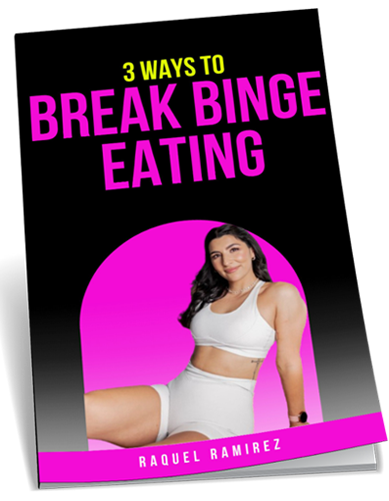Glutes can improve aesthetics, health, strength, performance and play a crucial role in injury prevention.
There are 3 muscles that make up the “glutes”
GLUTEUS MAXIMUS (the largest)
GLUTEUS MEDIUS
GLUTEUS MINIMUS (the smallest)

I remember many years ago believing that it would be impossible to grow glutes to their round and full potential like I was seeing on Instagram and youtube from fitspo’s…until I started training them and seeing results for myself! Only then did I realize how easy it was for these muscles to change shape rapidly – with proper training and food consumption I didn’t want to stop.
Dare I say it but over the years booty building programs have played a huge role in the growth of online training and online coaches. Social media has paved the way for women and men to grow their glutes, look better, feel confident, and have fewer injuries. And it’s here to stay.
GLUTE TRAINING
This article is a brief look into the ins and outs of glute training, but this is by no means the extent of glute training. Also, this is written in a general fashion because everyone is different so if you have a personal question please don’t hesitate to contact me via raquelfitpt@gmail.com OR DM on Instagram (@raquelfitpt).
What we will know in 10 years’ time may be the same or maybe even better, but if you apply what the industry knows today you will get a great result.
Also, take progress pictures! This will be a fantastic way to assess the progress you make over time. Nothing fancy just put your camera on a self-timer, have natural lighting, hands by your side all the way around and you will see your body change!
Finally, please don’t complain about not being able to grow your glutes if you’re not applying the following and measuring all factors involved. You don’t get to complain if you’re not putting in the work to change.
List of factors to consider that play a role in glute development
- Genetics
- Tempo
- Load
- Training history
- Training frequency
- Exercise order and selection
- ROM (range of motion)
- Effort
- Recovery and Rest Periods
The tea! How do we grow these glutes?
Training volume / “how much is needed to grow the glutes”
In order to grow your glutes, we need to HYPERTROPHIES (increase in size) these muscles. We can easily do this by training often and at a moderate weight AND applying progressive overload!
EXAMPLE what you don’t want to do
If you trained your glutes HARD once a week and it took you an entire week to recover this is actually not helpful to grow your glutes at all. This is because it is not enough stimulus for growth, although you have torn the muscle fibers and have clearly caused damage to the muscle cells (which is a good thing for muscles to grow), your ability to train your glutes again and capitalize on that muscle tissue breakdown is significantly reduced. It goes the same for too often – check this out.

What this is showing us is that when you train we break down muscle, it’s a good thing – the red ribbon shows this. The recovery phase is the blue ribbon. If you train too often you don’t get enough time to rest so that muscle can grow and it makes it hard for the muscle to grow.
If you train infrequently you can see that the optimal time to hit that muscle group again is the purple part of the ribbon but you’ve missed your opportunity. So you do this for an entire year and nothing changes.
If you train too infrequently AND too hard you get a combination of these – you need more recovery so the blue line would be extended double at least, and then by the time you hit that muscle group again you’ve lost the chance to force more muscle damage for hypertrophy sake.
How to train and grow your glutes – latest blog post 2021
Remember HYPERTROPHY is to increase in size and the way we know how to do this is be able to train a muscle group again and again with good recovery between. So one hard session a week is not going to grow the glutes.
 I would suggest training your glutes at least 2 to 4 times per week, with one or two rest days between each day.
I would suggest training your glutes at least 2 to 4 times per week, with one or two rest days between each day.
In 2016 I trained them 3 times a week. and it worked a treat (see image to the left). You could train them every day however the intensity would need to be VERY low, so lots of band work and training at a light intensity would be enough.
Bret Contreras states you can do approximately 10 – 20 sets per week for glutes. For some individuals, it may be more and as high as 30 to 40 sets per week. It does depend on the factors listed above.
The more experienced lifter you are the more important tempo, load, ROM, and effort becomes. This is because advanced lifters cannot rely on ‘newbie gains’ as beginner lifters can.
Newbie Gains
Newbie gains are where beginners start training consistently hard and their body adapts and changes fast. After many months this will taper off which is where a new stimulus is needed for the body to adapt/change again.
PLEASE NOTE if you lack glute engagement (the feeling that you cannot squeeze the hell out of your glutes) then this will also determine your results. You will need to do exercises that activate your glutes prior to training. Some exercises where you can focus on building the mind to muscle connection include; Dr Lock Clams, banded abduction, banded hip thrusts, banded squats. If you still struggle to feel your glutes the weight could be too heavy, or your technique is wrong.
Exercise Selection
There are many exercises and variations that you can do for your glutes. The ones you should choose will be a bit different from the next person, the aim is to be able to squeeze and feel your glutes majority of reps. I would choose a compound lift like a Barbell Hip Thrust, RDL or Deadlift or Squat followed by accessory exercises like step-ups, goblet squats, banded abductions, hamstring curls, back extensions to name a few.
An exercise will have a dominant muscle group however there’ll be some interplay with other muscle groups at some stage. For example, if we think about a squat, the main mover is the Quads – however, the hamstring, glutes, calves, core, and lats also play a role in shifting the weight, especially as we start to PB lifts, the whole body is being worked.
Progressive Overload
Progressive Overload is applying greater stimulus (tempo, load, ROM, reps and sets, rest periods) to a muscle group than last time. So to get better results you need to change these as your muscles get stronger and more accustomed to movement patterns.
The easiest way to determine when you should apply progressive overload is by paying attention to your biofeedback and workouts. You may want to change your workouts or simply do the same workout with pauses, half ranges, slower tempo, more ROM, or simply less rest or more sets and reps when;
- The weight you started with is now easy to do
- Feeling ‘comfortable’
- Not getting out of breath
- Being bored
Food consumption
I grew my glutes in the early years of my training with very little focus on ‘calories’. I focused on food quality and definitely have learnt so much more since then.
Mistakes I made
- Not eating enough protein
- Eating a lot of ‘sweet’ and trigger foods
- Eating a lot of gluten and soy
- Sleeping very late i.e. lack of recovery
- Unregulated training program
- A lot of HIIT training (which I was teaching at the time)
- Under-eating and overeating
 I would not recommend being in a 50% deficit from baseline to grow your glutes. What you see here is the product of training over many years but also being very depleted. When I competed in 2018 I had built my glutes and continued to train them. At this stage, I remember checking in with my coach and they had dropped about 10cm from a hard deficit. This is why I don’t recommend dieting hard and trying to gain muscle.
I would not recommend being in a 50% deficit from baseline to grow your glutes. What you see here is the product of training over many years but also being very depleted. When I competed in 2018 I had built my glutes and continued to train them. At this stage, I remember checking in with my coach and they had dropped about 10cm from a hard deficit. This is why I don’t recommend dieting hard and trying to gain muscle.
But you could certainly change your body composition and increase muscle mass from a 5% or 15% calorie deficit. The less food you eat the harder it will be to grow your glutes.
Similarly, I wouldn’t recommend overeating because you will just gain fat. There’s only so much your body needs and whatever is not used will be stored as fat anyway.
What exactly should you eat?
If you’re reading this you are looking for answers to a problem! Eating at maintenance and above (surplus) IS where the magic happens, it’s the point that the body has so much fuel that it can give to the muscles you are working on! Follow me for all the women’s health, education, and training updates @raquelfitpt.
Ideally you don’t want to skimp out on protein, fats, and especially carbs for growth!
Considerations to consider if you’re not seeing changes in your glutes include:
- Lack of glute activation and /or engagement
- Training through pain, not resting and recovering: you want to be able to train your glutes frequently to grow. Being constantly sore means you won’t be able to train hard enough and as frequently
- History of injury: selecting appropriate exercises that don’t trigger pain, and eventually allow to move pain-free
- Limited ROM: lack of mobility will place a restriction on form, anatomical restrictions require different exercises and/or set-up to accommodate the anatomy
- You’re not being consistent in training or nutrition
- Being in a deficit and for too long: you’re glutes will shrink / appear smaller because you are carrying less body fat and muscle overall
- Sleep is poor: anything less than 7 hours a night is not enough to recover
- You’re not applying progressive overload
- Your program sucks
- You’re not training hard enough
Click here for the GROWING GLUTES Q&A I answer your questions regarding glutes!
 FROM 2014 to 2020
FROM 2014 to 2020






